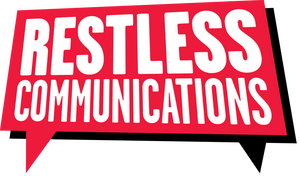A few years ago I started touting around an idea about how to cross-compare the value of PR coverage on print, TV, radio and online. Social media evaluation was a relatively new phenomena.
Every PR agency worth its salt was wrestling with the same thing. How to demonstrate to clients the value of earned media coverage, particularly the rapidly growing area of online, compared to other channels.
The route I started going down was to develop a simple formula which would apply across all channels.
Cost per unique engagement minute
i.e. How much does it cost to get one person to spend one minute of ‘quality’ time registering our content or our messages, across any/all channels
Bear in mind, this was simply to compare the volume and visibility of coverage. This was before we’d quite got to grips with the new concepts of engagement and then advocacy which online comms offered.
It never quite took off — probably because at the time we simply didn’t have the tools/time to implement or measure it properly. But also too many clients insisted on a (shoot me please!) AVE comparison — which also highlighted their naivity about how online advertising was purchased — but that’s another story.
Many of the finest PR (and now social/digital) professionals were wrestling with the same thing. People like Philip Sheldrake and Stephen Waddingtonin the UK, and Katie Paine in the US, as well as AMEC and plenty of people involved in the Barcelona Principles.
It was and still is very hard to decide what to measure, and then what to compare it against. Particularly when you’re trying to evaluate which channel is the most cost-effective channel to use.
So I’m pleased to see people like Ev at Medium again drawing attention to the futility of the simplistic comparison metrics which are still industry-standard, and proposing something similar(ish) — TTR total time reading in Medium’s case — to replace them.
In his recent Medium post Ev defends his quote about ‘not giving a shit’ that Instagram has more unique users than Twitter, on the basis that both channels/media perform very different functions, so simply to compare one metric (perhaps the easiest metric to grab hold of — number of uniques) is to dramatically miss the point of the purpose and value that each channel brings to its users.
He’s right.
I got on a similar high-horse when a large chunk of the social media bubble went crazy for Klout. Again, a one-dimensional metric which was bound to fail in a multi-dimensional world.
Are there better ways of comparing apples and pears? I think there are. Media buyers have tried various methods to roll together TVRs, uniques, pre-roll views, eye-tracking and God knows what else, but at the end of the day there isn’t yet a way to accurately measure and compare volume and influence of any media coverage, or channel.
And there won’t be.
It’s impossible.
Influence and relevance will always be subjective.
Just ask yourself, what is the most influential newspaper? It depends entirely on where you live, what you’re interested in and what factors actually create the change you really want to measure.
So trying to compare Twitter and Instagram purely on the basis of numbers of users is similarly destined to fail. Different people use different channels for different reasons.
If advertisers want to dig a bit deeper and can effectively segregate different audiences then a more rigorous comparison might be a return to my old thinking of cost per unique engagement minute, or in Medium’s case, the TTR — total time reading.
That could at least demonstrate how many people spend how much time looking at your content, so people can draw some sort of ROI and value against it. At its most basic level, to decide whether it’s worth spending money on paying people to create it.
As more brands and SMEs become publishers, I’m convinced these metrics will become easier to measure, and can provide a benchmark against which to see what content is ‘working’. They could also possibly provide a benchmark aross different channels too.
But, even this metric misses out on capturing what people actually do as a result of exposure to the content. Engagement and advocacy is the next step on.
And the digital world is better placed to deliver tangible ‘results’ metrics than TV, and is light years ahead of print or outdoor advertising.
But until then, we’ll have to live with journalists, clients and even colleagues over-simplifing the metrics available to make whatever point they want to make.
And don’t even get me started on last-click attribution…
[This was first posted on Medium.com]


